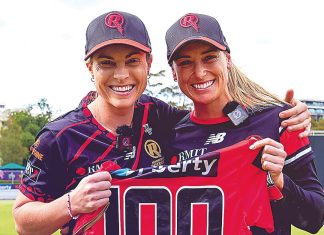LATROBE Valley’s community agencies have been commended by one of Australia’s leading charity organisations for their proactive response to a new program targeting early childhood disadvantage among local indigenous children.
The Brotherhood of St Laurence will this month call for expressions of interest from Latrobe Valley agencies keen to deliver a newly funded program known as the Home Interaction Program for Parents and Youngster.
HIPPY aims “to close the gap in school readiness between children from disadvantaged backgrounds and the Australian norm,” according to Brotherhood of St Laurence acting executive director Rob Hudson.
Latrobe Valley has been chosen as one of an initial 25 communities across Australia to run an expanded HIPPY program, this time specifically targeting Indigenous children.
In July the Federal Government announced HIPPY would be extended to 50 communities, with the Valley among the first 25 trial sites, after the Brotherhood consulted “with local communities”.
Speaking with The Express Mr Hudson said his organisation had selected communities according to a range of criteria including a proven capacity to deliver such programs, the existence of significant links between agencies and the indigenous community and evidence of support from the indigenous community for the program.
The Valley’s indigenous population figures were high enough to qualify for HIPPY, Mr Hudson said, and Australian Early Development Index data on 7000 communities nationally established this region’s need for support.
The most recent AEDI Latrobe data showed more than 40 per cent of students in Morwell and Churchill were deemed “vulnerable on one or more domains of the AEDI”, with high percentages found to be vulnerable in areas of language skills, social competence and communications skills and general knowledge.
The AEDI website says a “key point to consider” was that indigenous children were “more than twice as likely to be developmentally vulnerable than non-indigenous children”.
Ultimately though, Mr Hudson said “community support was vital” and the Valley had proved it was “more than ready”.
He said “rigorous independent research” had shown “at the beginning of HIPPY children’s numeracy and literacy skills were, on average, up to 30 per cent below the Australian norm but after two years of HIPPY (their) cognitive development was the same as the Australian average.”
The two-year home-based parenting and early childhood program engaged home tutors from local communities to work with parents, preparing children for school, he said.
HIPPY helped parents “understand their role as their children’s first teacher…and gives them the confidence to understand their kid’s own development, and to engage with the school when their children start”.
Mr Hudson said the program “empowered parents” and offered opportunities for them to become tutors in subsequent programs, “giving them a foothold into employment in the area, if they want”.
“They would be paid to work with families and this can lead to certificates in early childhood development,” he said.











